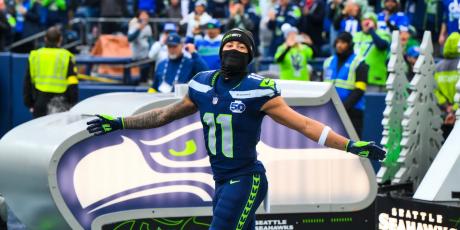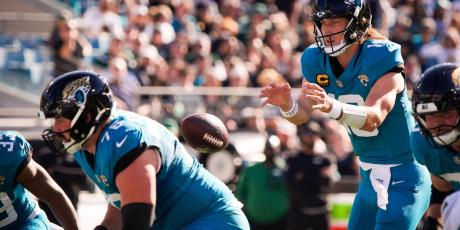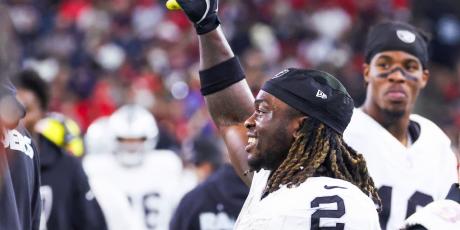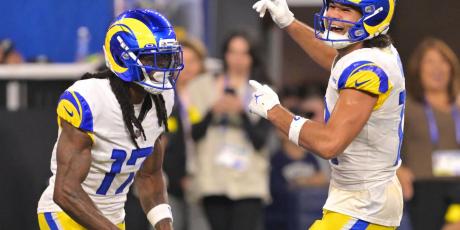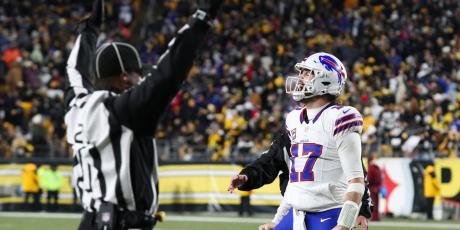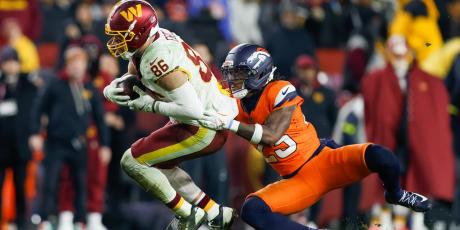Understanding NFL Next Gen Stats in 2025
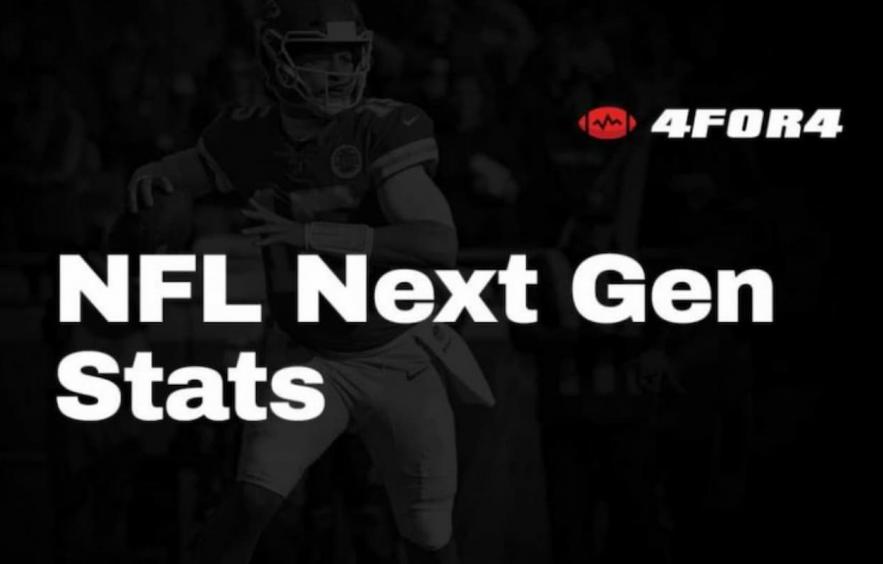
If you’ve watched enough football over the past few years, you’ve likely noticed the growing presence of Next Gen Stats in NFL broadcasts. Whether through TNF’s Prime Vision, the popular “Catch Probability” highlights, or mysterious stats like “pressure rate” and “air yards,” the NFL’s unique player-tracking engine has created a whole new pocket of data for fantasy nerds to mine.
But what are the relevant Next Gen stats, and when and how can we use them to further our fantasy acumen? This article should give you a solid starting point for both questions. And if you have any others, reach out on X (@MattOkada)!
Note: You can comb through the data yourself here and peruse the full Next Gen Stats glossary here.

DraftKings is giving ALL customers a can't-miss offer for Best Ball: Draft One, Get One! Enter a lineup in the $15 Million Best Ball Contest for just $20, and you'll score another Best Ball ticket to play FREE for a share of $15 million—giving you a second shot to win big!
Next Gen Passing Stats
Air Yards
At the core of much of what Next Gen Stats does with the passing game is “Air Yards,” or “the vertical yards on a pass attempt at the moment the ball arrives at its target, in relation to the line of scrimmage.” You may have heard the label “depth of target,” and more common terminology might describe how far “downfield” a pass traveled. By any name, it's a metric to separate deep shots from dump-offs, and to delineate everything in between.
“Intended air yards” (air yards on pass attempts, IAY) and “completed air yards” (air yards on completions, CAY) both correlate well with fantasy points, as QBs who are successfully driving the ball downfield are going to score more fantasy points on average than those who lean on the dink-and-dunk. For example, Patrick Mahomes has posted drastically reduced air yards metrics over the last couple of years, and his fantasy finishes have suffered as a result. In 2024, he averaged just 6.3 intended air yards per attempt and 4.0 completed air yards per attempt — both career lows and the third-fewest in the league. Consequently, he hit just 0.49 fantasy points per attempt, totaled 282.52 points on the season, and finished as the QB12.
| Season | Average Air Yards (Intended / Completed) | Fantasy Points Per Attempt (QB Finish) |
|---|---|---|
| 2024 | 6.3 / 4.0 | 0.48 (QB12) |
| 2023 | 6.6 / 4.0 | 0.47 (QB8) |
| 2022 | 7.5 / 5.4 | 0.64 (QB1) |
| 2021 | 7.3 / 4.8 | 0.55 (QB4) |
| 2020 | 8.5 / 6.3 | 0.64 (QB4) |
| 2019 | 8.6 / 6.2 | 0.59 (QB7) |
| 2018 | 9.2 / 6.4 | 0.72 (QB1) |
As the table shows, Mahomes’ fantasy points have correlated very closely with his average air yards throughout his career — and this principle translates pretty smoothly to all QBs on the whole.
Last year, the top five qualified QBs in average IAY were Anthony Richardson (an absurd 12.0), Trevor Lawrence (9.3), Jameis Winston (9.2), Lamar Jackson (9.0), and Sam Darnold (8.9). The bottom five were Tua Tagovailoa (5.6), Gardner Minshew (6.0), Patrick Mahomes (6.3), Aaron Rodgers (6.7), and Baker Mayfield (6.8). Even if you remove the fantasy points from rushing, the "deep passing" group outscored the "dink-and-dunk" group in passing fantasy points per attempt.
Quarterbacks with lower air yards benchmarks can still be viable for fantasy. Mayfield in 2024 — with his high volume and touchdown rate — is a good example. But as a rule, pushing the ball downfield typically correlates well with more efficient fantasy production and provides us with upside plays like Jackson and Darnold last year.
Completion Percentage Above Expectation
One of the more popular examples of Next Gen Stats I mentioned earlier in the introduction was “Completion Probability” — something you may have seen flashed on NFL Network highlights of particularly wild touchdown passes. One of the most memorable from last year was this one from Jayden Daniels to Terry McLaurin last season, which NGS tagged with a 10.3% completion probability, the lowest on a TD throw all season.
Jayden Daniels. Terry McLaurin. THE COMMANDERS.
📺: #WASvsCIN on ABC
📱: Stream on #NFLPlus and ESPN+ pic.twitter.com/bP5qrpGN8q— NFL (@NFL) September 24, 2024
From the data NGS has collected on these factors, they produce an “Expected Completion Percentage” statistic (xCOMP), which can then be used to calculate a QB’s “Completion Percentage Above Expectation.” A passer’s xCOMP is a good indicator of how often they’re making “tough throws” rather than easy ones, and a passer’s completion percentage above expectation is often a good indicator of their accuracy and efficiency on all throws.
| Player | % Over Expected | Player | % Below Expected |
|---|---|---|---|
| Jalen Hurts | +6.6 | Anthony Richardson | -11.3 |
| Joe Burrow | +4.9 | Cooper Rush | -9.5 |
| Jared Goff | +4.3 | Aaron Rodgers | -5.7 |
| Derek Carr | +3.4 | Trevor Lawrence | -5.2 |
As a rule, the best in the “above expectation” business are known for succeeding on the chances they take, while taking fewer of those chances. The worst "below expectation" offenders are mostly guys willing to sling it without the greatest results (Richardson, Lawrence), or in some cases to dink-and-dunkers with such a high xCOMP that their actual completion percentage ends up being lower by necessity (Rodgers).
Most of the time, the best fantasy passers are those with a positive differential above an average or slightly above average xCOMP. This is because quarterbacks with extremely high xCOMPs — like Tagovailoa or recent Mahomes — often end up being consistent but low-upside “game managers” for fantasy, while QBs with extremely low xCOMPs — like Richardson — are usually volatile as passers, with high highs and low lows.
There’s a lot of room for fantasy production through different iterations of these statistics, but it’s helpful to know what they mean for a player’s consistency, upside, and all-around fantasy production.
Time to Throw
Time to Throw is quite simply how many seconds a quarterback takes from snap to throw on each dropback. It can often be as much an indicator of offensive scheme and protection as it is of a QB’s processing speed or willingness to scramble, but it typically involves some combination of all three. Guys like Jalen Hurts, Justin Fields, and Sam Darnold are consistently "slow," while Tua Tagovailoa, Joe Burrow, and Trevor Lawrence are consistently "quick."
Time to throw doesn’t have the strongest correlation to fantasy points, largely because of how much scrambling QBs tip the scales, but it can offer some insights when combined with additional context. If a passer has a low time to throw and high intended air yards, they’re like a volatile pocket-passer with big upside and a few extra interceptions (Will Levis). If they have a high time to throw and low intended air yards, they’re probably mobile, struggling to process, and at risk of inflated sack rates (Deshaun Watson). Typically, lower times to throw are better for QB production if you’re not racking up points on the ground (guys like Burrow and Mayfield win this way). But every once in a while, there’s an exception that combines high time to throw with high intended air yards and finds impressive week-to-week production through big play efficiency — Darnold pulled this off brilliantly in his 2024 breakout, with the league's third-longest time to throw and fifth-highest average IAY.
Next Gen Rushing Stats
Efficiency
Next Gen Stats’ rushing efficiency metric (EFF) is calculated by measuring the total distance a player travels (in any direction) per rushing yard gained (downfield). At its core, it is a measurement of how “North/South” a runner tends to be. While the number doesn’t correlate that strongly with fantasy points, it does have a strong inverse correlation with yards per carry averages — that is, as the efficiency number gets lower (for more North/South runners), the yards per carry tends to go up.
This correlation is swayed by more volatile “big-play” runners, as you will commonly see more breakaway runs from the "lower EFF" guys. Guys like Jonathan Taylor and James Cook typically put up very low EFF numbers, and are known for getting downfield in a hurry and being efficient as a result. Players like Kenneth Walker III and Alvin Kamara post higher EFF numbers and are known for dancing behind the line and (sometimes) making a lot out of a little.
As with time to throw, fantasy backs can win in different ways with different EFF markers. Pass-catching studs like Kamara and D'Andre Swift often produce for fantasy with high EFFs, but more “pure rushers” like Taylor and Derrick Henry have had extremely efficient fantasy stretches with extremely low EFFs.
Rush Yards Over Expected
Similar to “Completion Percentage Over Expected,” Next Gen Stats also has a metric to measure expected rushing yards on a given play and then calculate the rush yards over expected (RYOE). Unsurprisingly, this number also correlates very closely with yards per carry, but can provide a little more insight to that number, with a little less dilution from broken plays.
Guys like Henry and Saquon Barkley are high on the RYOE list (especially last year), but we can also see the rise of interesting names like Jordan Mason (+1.38 average RYOE in 2024) and Chuba Hubbard (+1.16), who have flashed the skills to make more out of a rush than the average player. We can also identify RBs who may never be a team's bell-cow back, such as Swift (-0.69 last year) and Javonte Williams (-0.60). Players aspiring to efficient fantasy seasons despite low RYOEs will likely need to find value in the passing game (as Swift often does) or the touchdown department (as James Conner and Jamaal Williams often have).
Next Gen Receiving Stats
Average Targeted Air Yards
After several years of growing popularity, Next Gen’s most recognizable impact in the fantasy community likely belongs to targeted air yards — i.e. air yards for receivers. Since we’ve covered the definition of air yards in the passing section above, we can focus here on how it translates to pass-catchers.
First, average targeted air yards (TAY), known colloquially to some as average depth of target (aDOT), is exactly what it sounds like — the average number of air yards downfield that a receiver sees on each target. It’s not at all difficult to pinpoint guys like Calvin Ridley and Christian Watson for high TAYs. These are your downfield specialists, who will typically be more volatile for fantasy but often responsible for boom weeks throughout a season. On the flip side, you have your Wan'Dale Robinsons, Khalil Shakirs, and typical tight ends, who tend to see more volume closer to the line of scrimmage and are asked to create after the catch.
As with several of the metrics we’ve discussed, you can get excellent fantasy production from both ends of the spectrum on TAY. Take the 2024 Buccaneers, for example: Chris Godwin logged just 5.7 average TAY (among the lowest in the league), while Mike Evans clocked in at 11.6 (above average). And yet, both finished top-10 at the position in half-PPR points per game.
Once again, context can be key for translating this metric into actionable analysis. Is a receiver a yards-after-catch superstar? His low TAY is probably not an issue. Is a deep-ball specialist with a high yearly TAY switching from a gunslinging QB to a rookie game manager this year? That might be a bad sign for his fantasy outlook.
It’s also worth noting that TAY can be very specifically applied based on your draft or league format. If you’re playing in a PPR league with a tight-end premium (extra points for TE receptions), Evan Engram and his low TAY (and therefore higher catch rate) get a pretty significant boost. Are you drafting a best-ball team to win a massive cash prize? Well, those “better-in-best-ball” wideouts are very commonly identified by high TAYs — guys like Alec Pierce and Rashod Bateman were inconsistent last year but had several big weeks perfectly suited for best ball.
% Share of Team’s Air Yards
While targeted air yards are valuable, higher numbers don’t necessarily mean “stud” receivers, just specific kinds of receivers. If you’re looking to find the true studs, that’s where share of team’s air yards (TAY%) comes into play. This metric takes a player’s targeted air yards and calculates it as a chunk of their team’s total air yards, creating a measurement of who’s earning the highest volume of their team’s most valuable targets. The top of this metric typically looks like a who’s who of wide receivers and tight ends, with names like Malik Nabers, Justin Jefferson, and Trey McBride ranking highly at their positions last year.
However, this metric is also extremely valuable in identifying breakout candidates, as a player with a high TAY% going from a bad situation to a better one will typically see noteworthy improvement. DJ Moore was a TAY% stud in 2022 (48.7%), but just the WR22 in total fantasy points. Then he moved to Chicago in 2023 and has finished in the top 15 both years since. Terry McLaurin was consistently claiming 30%+ of his team's air yards early in his career, but often coming up short in fantasy thanks to poor quarterback play. With the arrival of Jayden Daniels, McLaurin suddenly snagged 13 touchdowns and finished as the WR6 in 2024.
Obviously, all TAY% are not created equal, as a 35% share of the Bengals' air yards is going to be worth far more than 35% of the Panthers' air yards, so that context is important to keep in mind. But if you’re looking to identify “X receivers,” or those rare “top-target tight ends,” this is a good way to do it. You might want to keep a close eye on Calvin Ridley (league-high 44.6% in 2024), Marvin Harrison Jr. (42.7%), and Rome Odunze (33.2%) in 2025.
The Bottom Line
- Next Gen Stats are best used to learn and understand the game, evaluate player talent, and explain the trends we see on the field. They’re not often the most predictive in a vacuum, but can help us spot useful nuggets of data when properly contextualized.
- In most cases, the NGS metrics are most effective at telling us what kind of player someone is, rather than whether they’re going to be a fantasy stud or not. It’s up to you (or your favorite fantasy analyst) to fit those metrics into a bigger picture and project the relevant consequences.
- Several of the stats we discussed here are most relevant in identifying volatility versus consistency in a player’s production, so use those numbers in conjunction with a good understanding of your fantasy drafts/leagues to find advantages.
- While these and other “rate” metrics are useful, volume is still king in fantasy. Ideally, our QBs would have high average completed air yards and our RBs would have low NGS Efficiency marks, but those numbers aren’t converted into fantasy points without opportunity.

